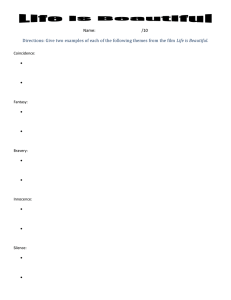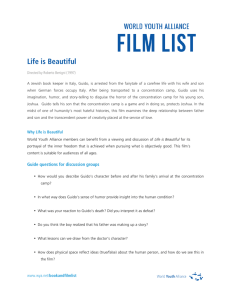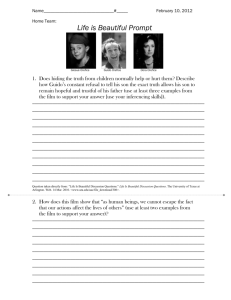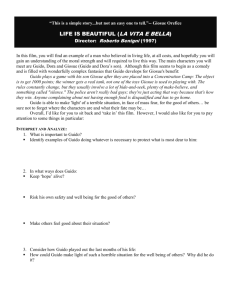File
advertisement
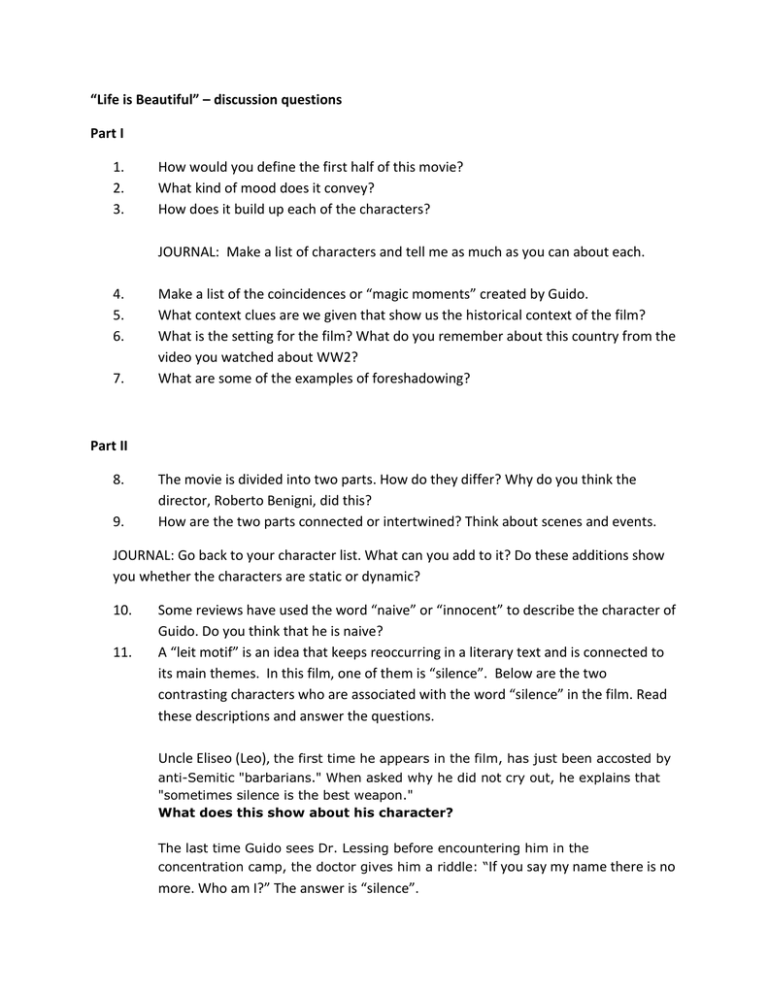
“Life is Beautiful” – discussion questions Part I 1. 2. 3. How would you define the first half of this movie? What kind of mood does it convey? How does it build up each of the characters? JOURNAL: Make a list of characters and tell me as much as you can about each. 4. 5. 6. 7. Make a list of the coincidences or “magic moments” created by Guido. What context clues are we given that show us the historical context of the film? What is the setting for the film? What do you remember about this country from the video you watched about WW2? What are some of the examples of foreshadowing? Part II 8. 9. The movie is divided into two parts. How do they differ? Why do you think the director, Roberto Benigni, did this? How are the two parts connected or intertwined? Think about scenes and events. JOURNAL: Go back to your character list. What can you add to it? Do these additions show you whether the characters are static or dynamic? 10. 11. Some reviews have used the word “naive” or “innocent” to describe the character of Guido. Do you think that he is naive? A “leit motif” is an idea that keeps reoccurring in a literary text and is connected to its main themes. In this film, one of them is “silence”. Below are the two contrasting characters who are associated with the word “silence” in the film. Read these descriptions and answer the questions. Uncle Eliseo (Leo), the first time he appears in the film, has just been accosted by anti-Semitic "barbarians." When asked why he did not cry out, he explains that "sometimes silence is the best weapon." What does this show about his character? The last time Guido sees Dr. Lessing before encountering him in the concentration camp, the doctor gives him a riddle: “If you say my name there is no more. Who am I?” The answer is “silence”. What does this foreshadow and what does this say about the doctor? Note: the last riddle, the one Dr. Lessing asks Guido to help him with is not a real riddle. Look at it and tell me what it means: Fat, fat, ugly, ugly, all yellow in truth, if you ask me where I am I answer "quack, quack, quack". Walking I make poo poo, who am I? JOURNAL: At the beginning, the narrator (supposedly Joshua grown up) says that this story is a fable. What is a fable and what elements does this story share with a fable? Tone: the tone is the implied attitude toward the subject matter that readers may infer from the text’s language, imagery, and structure. Do you think that treating the theme of the Holocaust in a comedic film like “Life is Beautiful” is disrespectful? Explain your answer.
